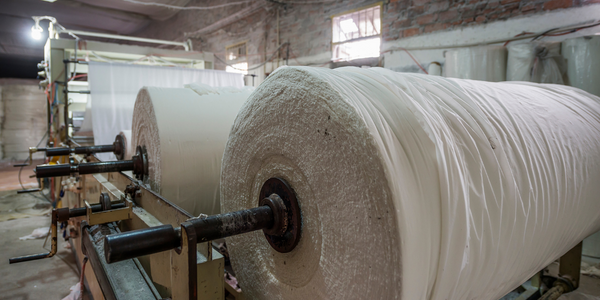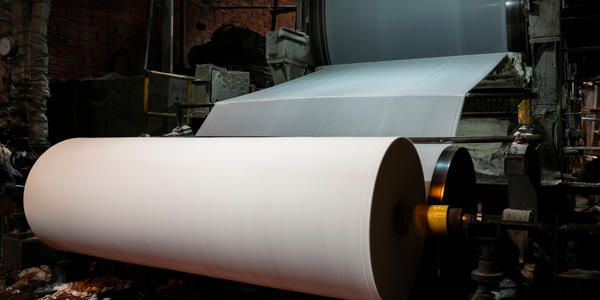Technology Category
- Analytics & Modeling - Robotic Process Automation (RPA)
- Functional Applications - Enterprise Resource Planning Systems (ERP)
Applicable Industries
- Finance & Insurance
- Paper & Pulp
Applicable Functions
- Maintenance
Use Cases
- Leasing Finance Automation
- Material Handling Automation
Services
- Cloud Planning, Design & Implementation Services
- System Integration
About The Customer
The customer in this case study is a regional US bank in the financial services industry. The bank had an ambitious plan to double its assets to $10 billion over five years. To support this growth, the bank wanted to boost productivity and customer satisfaction through process automation technology. The bank offers a full range of commercial and consumer-facing lines of business. The bank had a core workflow tool but it lacked automation, making it essentially a checklist. The bank needed a more comprehensive solution that could automate key processes such as wire transfers and Paycheck Protection Program (PPP) loans.
The Challenge
A regional US bank in the financial services industry was faced with the challenge of supporting its aggressive growth targets. The bank aimed to double its assets to $10 billion over five years and sought to use process automation technology to boost productivity and customer satisfaction. However, the bank's existing workflow tool lacked automation capabilities, essentially functioning as a checklist. The bank needed a more comprehensive solution that could automate key processes such as wire transfers and Paycheck Protection Program (PPP) loans. The bank's enterprise automation team began researching options to fuel and support the bank's growth successfully.
The Solution
The bank decided to use a combination of Nintex RPA, Nintex Workflow Cloud, Nintex Forms, and more to automate key processes. Nintex offered a comprehensive suite of tools for workflow automation, digital forms, and mobile apps, in addition to the RPA and document generation capabilities the bank was already leveraging. Nintex also offered integration with third-party software, including Dropbox and Salesforce, that the company already used, cost-effective licensing, and ease of use. The bank standardized on Nintex Workflow Cloud and the rest of the Nintex suite for all of its process automation needs. The first business process to be automated was the bank's outgoing wire transfer process. The bank's IT team transformed the wire transfer process by replacing the paper form with a dynamic Nintex Form that captures details of the transfer. Nintex RPA bots verify the customer's identity and available bank balance, pull current exchange rates, and automatically calculate amounts in the specified currency.
Operational Impact
Quantitative Benefit

Case Study missing?
Start adding your own!
Register with your work email and create a new case study profile for your business.
Related Case Studies.

Case Study
Wireless Improves Efficiency in Compressed Air Systems
Hollingsworth and Vose wanted to improve the efficiency of their compressed air system, lower the electricity expense component of manufacturing cost in their commodity industry, and conserve energy leading to lowered greenhouse gas emissions. Compressed air systems degrade over time and become leaky and inefficient. Hollingsworth and Vose wanted to increase the frequency of system inspections without paying the high cost of manual labor.

Case Study
Real-time In-vehicle Monitoring
The telematic solution provides this vital premium-adjusting information. The solution also helps detect and deter vehicle or trailer theft – as soon as a theft occurs, monitoring personnel can alert the appropriate authorities, providing an exact location.“With more and more insurance companies and major fleet operators interested in monitoring driver behaviour on the grounds of road safety, efficient logistics and costs, the market for this type of device and associated e-business services is growing rapidly within Italy and the rest of Europe,” says Franco.“The insurance companies are especially interested in the pay-per-use and pay-as-you-drive applications while other organisations employ the technology for road user charging.”“One million vehicles in Italy currently carry such devices and forecasts indicate that the European market will increase tenfold by 2014.However, for our technology to work effectively, we needed a highly reliable wireless data network to carry the information between the vehicles and monitoring stations.”

Case Study
Process Predictive Analysis in Pulp and Paper Mill
Common paper breaks consequently lead up to 60 minutes of downtime, delaying a potential $10K per hour of production value process. Thus, defective products cause financial and damage company's reputation. Improving quality and reducing defect rates can generate millions of dollars of revenue per year for your company.

Case Study
Safety First with Folksam
The competitiveness of the car insurance market is driving UBI growth as a means for insurance companies to differentiate their customer propositions as well as improving operational efficiency. An insurance model - usage-based insurance ("UBI") - offers possibilities for insurers to do more efficient market segmentation and accurate risk assessment and pricing. Insurers require an IoT solution for the purpose of data collection and performance analysis

Case Study
Smooth Transition to Energy Savings
The building was equipped with four end-of-life Trane water cooled chillers, located in the basement. Johnson Controls installed four York water cooled centrifugal chillers with unit mounted variable speed drives and a total installed cooling capacity of 6,8 MW. Each chiller has a capacity of 1,6 MW (variable to 1.9MW depending upon condenser water temperatures). Johnson Controls needed to design the equipment in such way that it would fit the dimensional constraints of the existing plant area and plant access route but also the specific performance requirements of the client. Morgan Stanley required the chiller plant to match the building load profile, turn down to match the low load requirement when needed and provide an improvement in the Energy Efficiency Ratio across the entire operating range. Other requirements were a reduction in the chiller noise level to improve the working environment in the plant room and a wide operating envelope coupled with intelligent controls to allow possible variation in both flow rate and temperature. The latter was needed to leverage increased capacity from a reduced number of machines during the different installation phases and allow future enhancement to a variable primary flow system.




